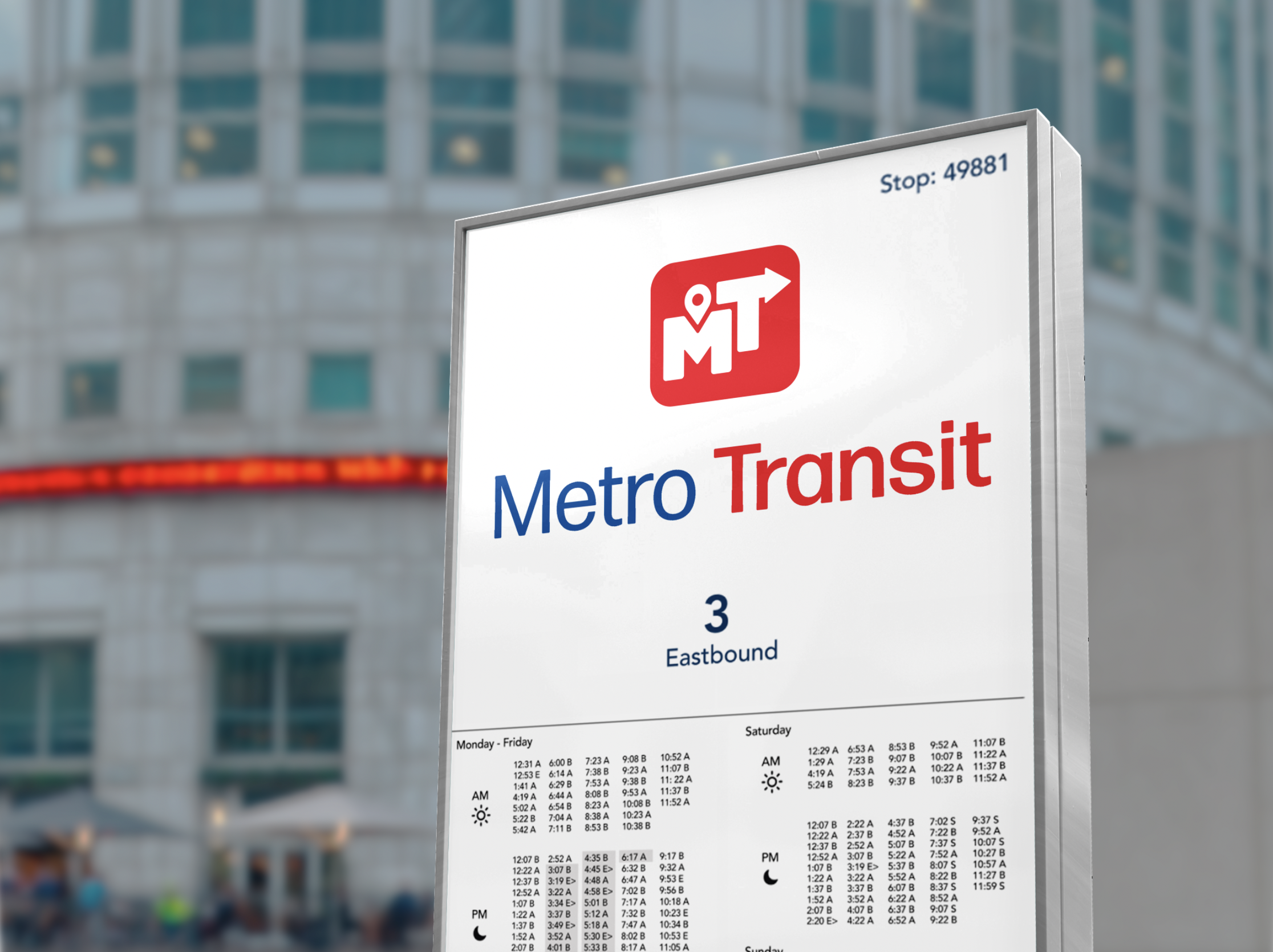Metro Transit
Design for Good
Building upon the foundation of user-centered design, we have developed a concept for a more accommodating bus stop. This concept not only improves the physical infrastructure but also enhances the overall experience for passengers and transit operators alike. By prioritizing safety, accessibility, and aesthetics, our design aims to positively impact society by creating a more inclusive and efficient public transportation system.
Design Focus & Tools
Service Design, User Research, Field Research
Figma, Information Interviews, Surveys
*2–person team with a timeline of 7–weeks
The Brief
Design for Good. Design a process, not a product. Leverage service design methodologies to create innovative solutions that address societal challenges. Choose a critical service and work to improve the experience for both consumers and providers. Develop concepts that positively impact society by applying user-centered design and empathy.
Design Process
Research
My partner and I gathered firsthand experiences and conducted comprehensive research, combining qualitative and quantitative methods to avoid relying solely on anecdotal data. We analyzed reviews from metro riders in the Better Bus Stops Community Engagement Report from recent years to identify patterns and consistent complaints.
We compiled data from a survey we designed and distributed to peers, primarily composed of metro riders.
We held an informational interview with the program manager of Better Bus Stops to learn about the shelter standards her team adheres to for every structure and what they are doing now to create a better transit experience while waiting for the bus.
Core Problems
Poor bus shelter experience, minimal amenities
Inaccessible signage design
How might we make bus shelters more comfortable, safe, and identifiable while also ensuring all riders feel more confident in knowing where they need to go?




